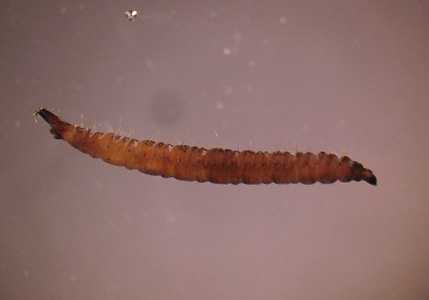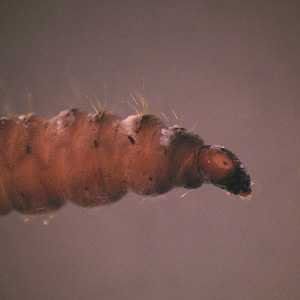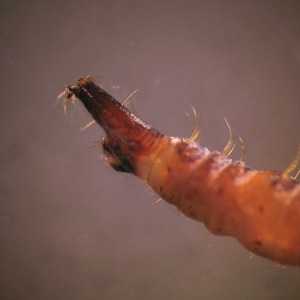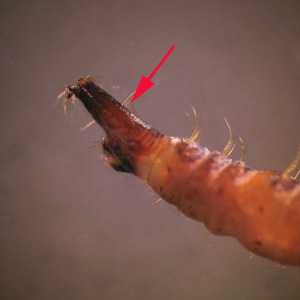
Case #260 - September, 2009
A 47-year-old woman presented a worm-like object to her doctor that she claims was found in the toilet following urination. The object, which measured seven millimeters in length, was preserved in formalin and sent to the local state health laboratory, which in turn sent the specimen to DPDx for diagnostic assistance. Figure A shows the entire object. Figures B and C show the anterior and posterior ends of the object, respectively. What is your diagnosis? Based on what criteria?

Figure A

Figure B

Figure C
Case Answer
The images in this case showed an aquatic larva of a fly in the family, Psychodidae. These organisms are not parasitic and an appropriate answer should have been No Parasites Found (NPF). Larvae of Psychodidae and related flies develop in standing water, including toilets. Their presence in a toilet may lead one to believe that the larvae were shed during urination or defecation. As such, they are often sent to public health laboratories for identification. It is important that a diagnostic microbiologist be able to distinguish these organisms from true parasites. Morphologic features of free-living aquatic fly larvae include a defined head capsule, long, thin setae, gills, and breathing tubes (red arrow, Figure C).

Figure C
More on: Artifacts
Images presented in the monthly case studies are from specimens submitted for diagnosis or archiving. On rare occasions, clinical histories given may be partly fictitious.
DPDx is an education resource designed for health professionals and laboratory scientists. For an overview including prevention and control visit www.cdc.gov/parasites/.
- Page last reviewed: August 24, 2016
- Page last updated: August 24, 2016
- Content source:
- Global Health – Division of Parasitic Diseases and Malaria
- Notice: Linking to a non-federal site does not constitute an endorsement by HHS, CDC or any of its employees of the sponsors or the information and products presented on the site.
- Maintained By:


 ShareCompartir
ShareCompartir